The beauty of Koraku-en
| Travel Reports by Chashitsu | view profile of Chashitsu |
| previous post |
| next post |
| Note: The opinions and views expressed in this user report are those of the individual author and do not necessarily reflect the opinions and views of japan-guide.com. |
April 21, 2016 - The beauty of Koraku-en
Koraku-en garden is one of the three most beautiful gardens in Japan I have visited this garden several times and will endeavour to convey some of this beauty with a photographic journey around the garden. The garden was built between 1687 and 1700 by the daimyo Ikeda Tsunamasa as a scenic stroll garden and remained under the familyfs control until the Meiji restoration, when it was transferred to Okayama city and opened as a public garden. It became practise at that time to build police stations nearby such public parks to control possible troubles and it still exists today. The garden suffered extensive damage during 1945 but was subsequently restored according to the Edo based design.
The garden covers 133,000 m and has three lakes/ponds, a long stream, a substantial area of grass and a variety of arable/planted areas. Entering via the main gate and travelling counter clockwise I will take you on a garden tour.
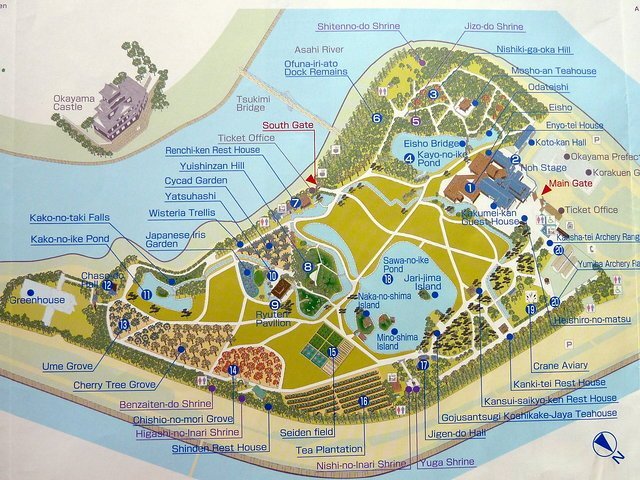
The first striking building after the guest house is the Enyo-tei tea house where the daimyo would receive guests and has a great view of the main lake Sawa-no-ike and the Yuishinzan hill. Adjacent to the tea house is the Noh stage. Ikeda Tsunamasa was a devotee and notable performer of Noh and assembled a collection a priceless noh costumes. Crossing the Kayo-no-ike lotus filled pond via the zigzag bridge to the heavily wooded Nishiki-ga-oka hill, where there is a tea house and shrines amongst the cypress woodland. In the middle of a bamboo thicket are the remains of an old landing dock for visitors arriving by river.

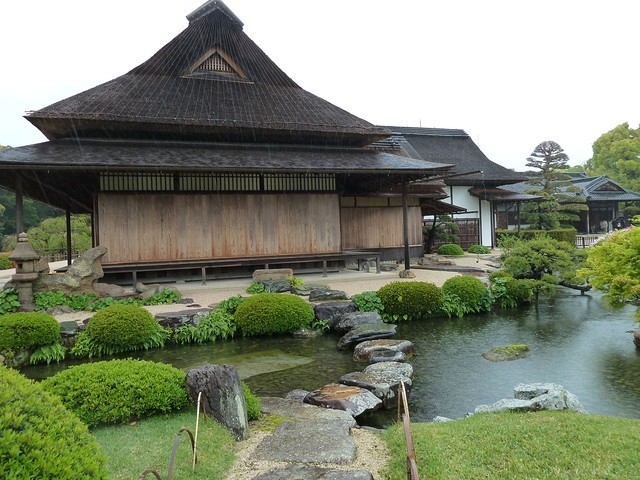
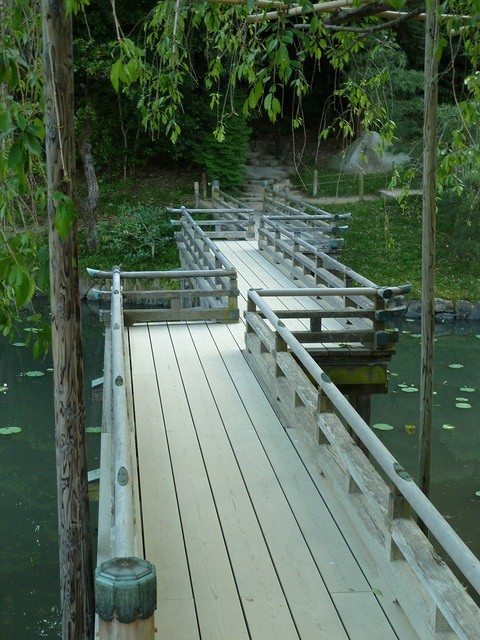
Passing the south gate from the castle is the Renchi-ken rest house by the stream, the founders favourite tea house, now a cafe and shop. On the other side is a large man made hill with azaleas at the foot and covered in maple trees. A small hut on the summit offers excellent views of the garden. Climbing down the path is the Ryuten pavilion with a small stream, iris and cycad gardens. There is a traditional zigzag bridge through the iris garden.

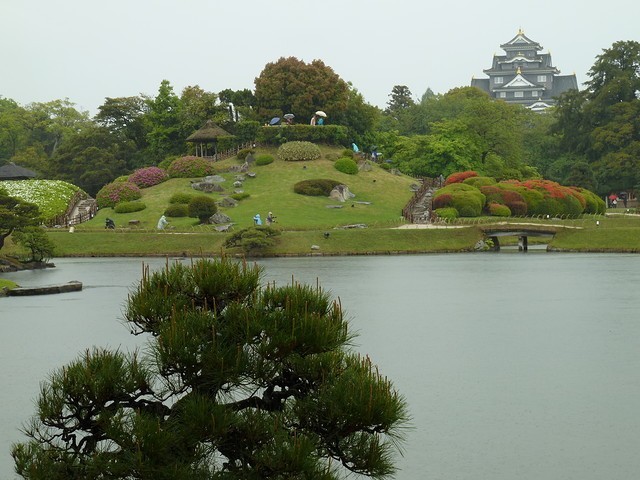
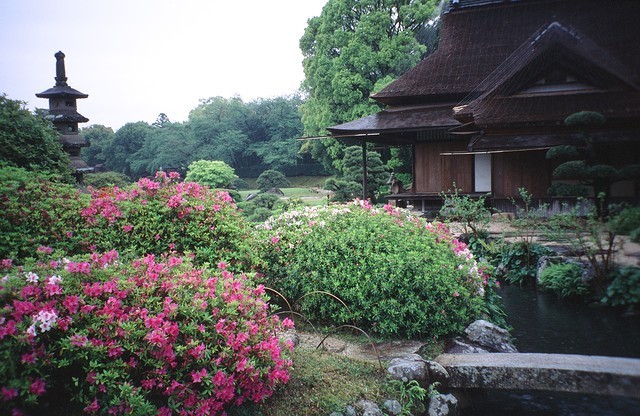
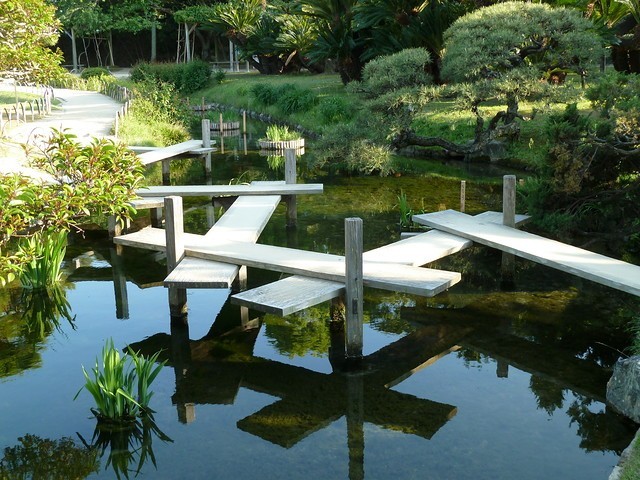
Moving round there is the Kako-no-taki waterfall feeding the Kako-no-ike pond and the stream on the south side of the garden. Turning back one passes through the plum grove and cherry orchard before reaching another maple grove of some hundred trees and the rice fields. The fields are laid out as in ancient times reflecting the taxation system of the time. There is another small rest house overlooking the tea plantation before reaching yet another tea house over looking the large sawa-no-ike lake with itfs three islands, one of which is linked to the garden by an arched bridge and houses the Nako-no-shima tea house.
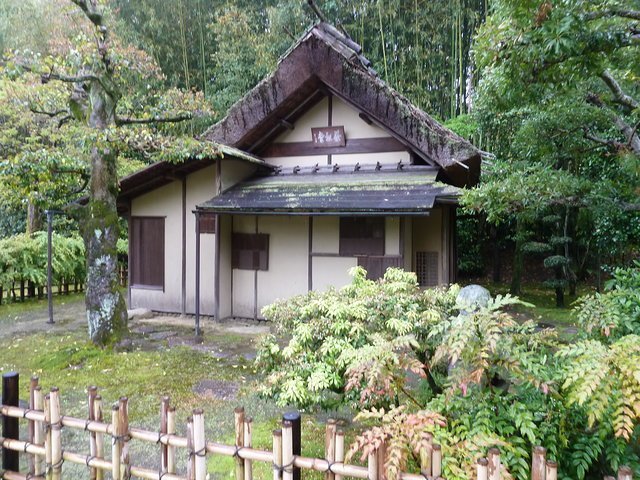
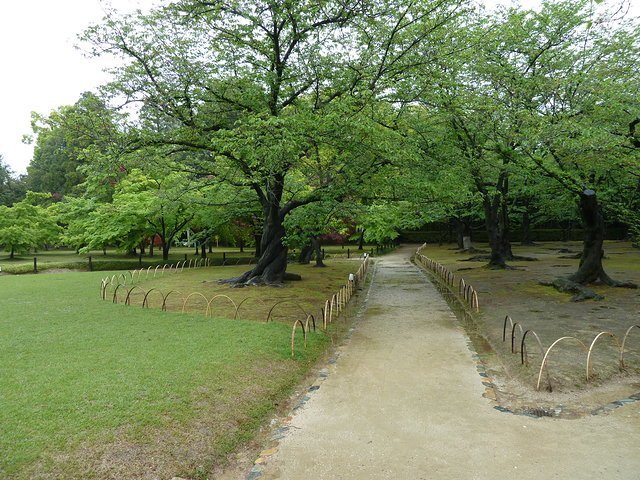
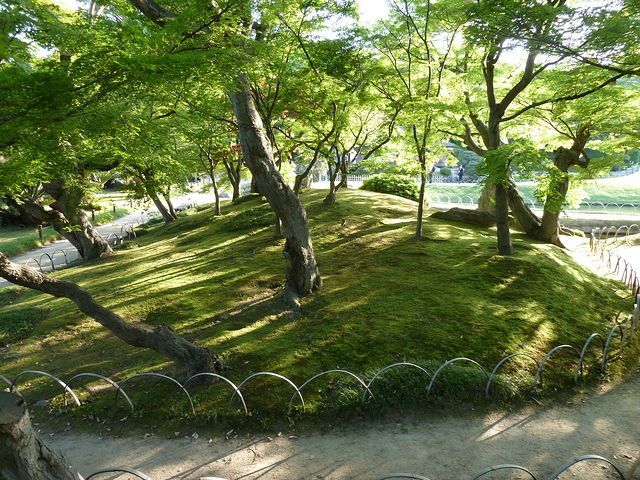
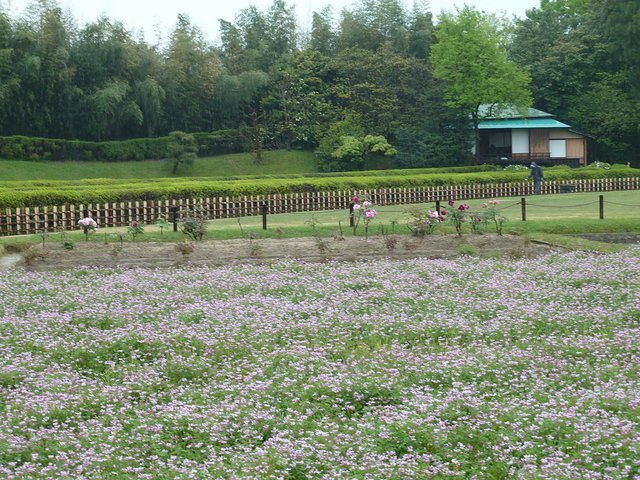
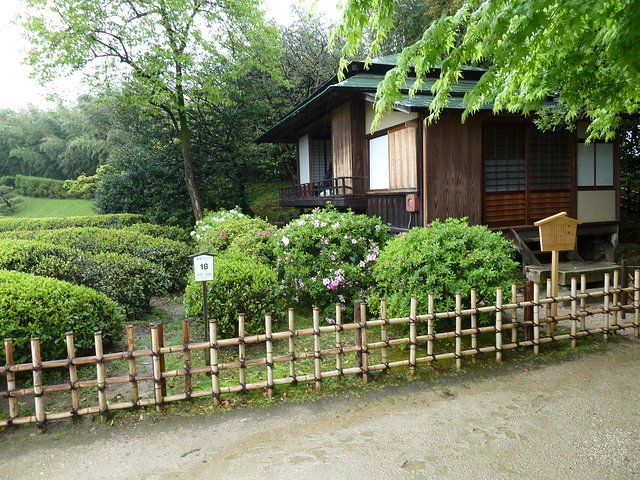
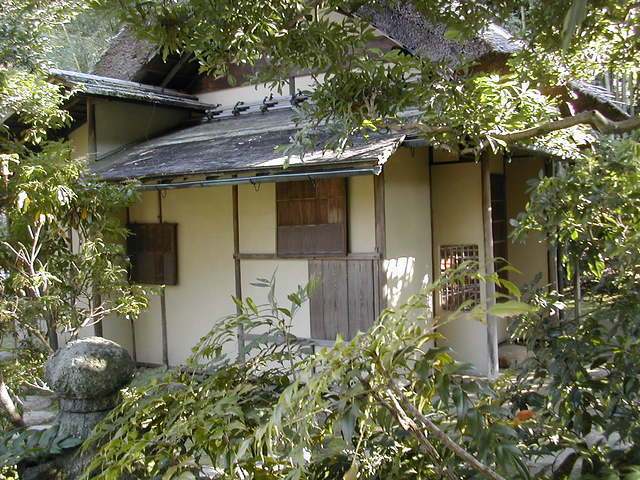
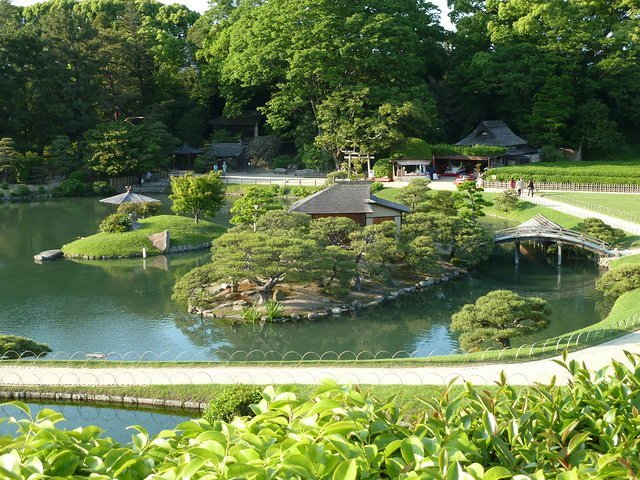
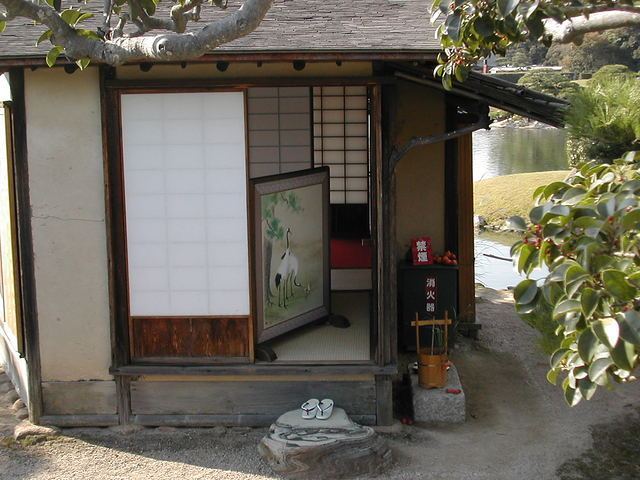
The route takes you past the red crane aviary and leads back to the main gate. Enjoy the spring blossoms, the summer irises, the autumn colour and the winter snows - a garden for all seasons.
| previous post |
| next post |
|
List of Posts:
2017/07/25 - Japan's tectonic landscape reflected in the gardens 2017/07/15 - Flora of Japan 2016/04/27 - Time in Asakusa 2016/04/25 - Kakunodate 2016/04/23 - A Thousand Cranes 2016/04/22 - Castle in the Clouds 2016/04/21 - The beauty of Koraku-en 2016/04/20 - Far from the Madding Kyoto Crowds - Part 1 2016/04/20 - Far from the Madding Kyoto Crowds - Part 2 2016/04/18 - A Day in the Mountains 2016/04/17 - Delights of Hikone 2016/04/16 - Nara Revisited 2015/01/03 - Kamakura temples and gardens 2015/01/01 - Takayama Temple Trail 2014/12/29 - Kurama - Kibune hiking trail 2014/11/10 - A visit to Himeji 2014/11/05 - Shigemori Mirei - The Rebel in the Garden 2014/11/04 - Arashiyama and nearby sights 2014/11/03 - The less visited sites of Nara 2014/11/03 - The gems of Matsue 2014/10/31 - Agon-shu Monastery 2014/10/30 - In the footsteps of the Shogun 2014/10/30 - Tale of the Genji |
